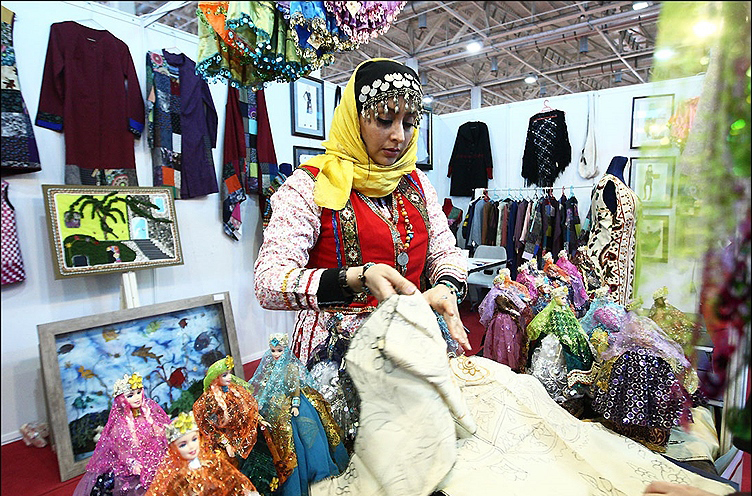The fourth International Fajr Fashion & Clothing Festival officially opened on Monday (March 2) at Tehran international exhibition center in the presence of officials and activists in the field of fashion and clothing.
The festival seeks to promote modern Islamic clothing designs and patterns, said festival secretary Hamid Ghobadi. Considering the fact that all the products displayed are locally made, he added, “Our main objective is to link the rich Persian heritage with domestically-made products.”
Director general of textile and apparel department at the ministry of industry, mine, and trade Golnaz Nasrollahi pointed to the first textile factory in Iran, founded in 1925, and said, “at that time the industry tried to meet public demand, but later over the years it developed to a great extent.”
The textile industry today pursues a new goal and its economic aspects are more important for the growing number of producers, she said, adding that since power consumption in textile industry is low and in return it creates high economic efficiency and income, “it can be the engine of economic stimulus and growth in Iran” as in other countries.
The festival is attended by designers and producers active in the field of fashion and clothing industry. Close to 200 producers are participating in the supply section, displaying 100 works of design. Selected works by the artistic-cultural juries will be announced and awarded on March 6.
In the science and university section, a total of 74 universities and 38 scientific centers have taken part, presenting new educational methods in the field.
Also in the Hijab (religious code of dressing) section, 50 institutes among the top producers and designers in the field have displayed their newest products.
Seven foreign countries are also attending the international section, showcasing their latest designs and apparel.
“The festival provides a good opportunity to foster aesthetic ideas in the design of Iranian clothes,” said costume designer in the field of cinema and television, Navid Farahmarzi, adding “each designer should adhere to the social standards set in the dress codes of a particular country and region.”
Highlighting the importance of “a modern approach towards Islamic designs and patterns,” he noted that in terms of producing aesthetic dress designs compatible with Iranian culture and religion, “we should avoid imitating unsuitable designs of the western culture.”
Awarding the best of each section, the festival will conclude on March 7.


